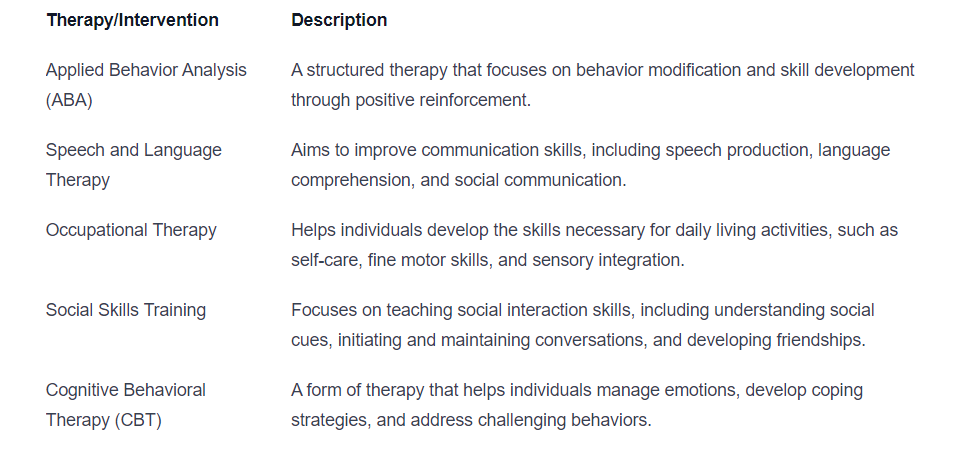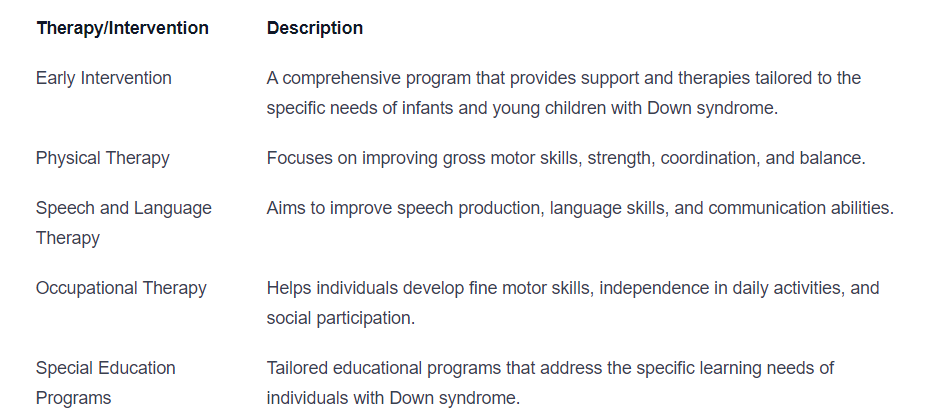Autism vs Down Syndrome: What is the Difference?
Unraveling the distinctions between autism and Down syndrome. Understand the differences and similarities with expert insights.

Understanding Autism and Down Syndrome
To unravel the distinctions between autism and Down syndrome, it's important to first have a clear understanding of each condition. Autism and Down syndrome are two separate developmental disorders, each with their own unique characteristics and challenges.

What is Autism?
Autism, also known as Autism Spectrum Disorder (ASD), is a neurodevelopmental disorder that affects social interaction, communication, and behavior. Individuals with autism may have difficulties in social interactions, exhibit repetitive behaviors, and face challenges with verbal and nonverbal communication.
What is Down Syndrome?
Down syndrome, on the other hand, is a genetic disorder caused by the presence of an extra copy of chromosome 21. This additional genetic material leads to physical and intellectual disabilities. Individuals with Down syndrome often have distinct facial features, mild to moderate intellectual disabilities, and may experience delays in development.
Prevalence and Causes
Autism and Down syndrome differ not only in their characteristics but also in their prevalence and causes. Autism is estimated to affect approximately 1 in 54 children in the United States, making it more common compared to Down syndrome. The exact causes of autism are not fully understood, but it is believed to involve a combination of genetic and environmental factors.
Down syndrome, on the other hand, occurs in about 1 in every 700 births. It is caused by the presence of an extra copy of chromosome 21, known as trisomy 21. This additional genetic material alters the course of development and leads to the physical and cognitive features associated with Down syndrome.
Understanding the distinctions between autism and Down syndrome is crucial in order to provide appropriate support and interventions for individuals with these conditions. By recognizing their unique characteristics and challenges, we can work towards promoting inclusion, understanding, and a better quality of life for individuals with autism and Down syndrome.
Differentiating Autism and Down Syndrome
Autism and Down Syndrome are two distinct developmental disorders, each with its own set of characteristics and features. Understanding the differences between these two conditions is important for accurate diagnosis and appropriate interventions. In this section, we will explore the key characteristics of autism, the characteristics of Down Syndrome, and the overlapping features between them.
Characteristics of Autism
Autism, also known as Autism Spectrum Disorder (ASD), is a neurodevelopmental disorder that affects social interaction, communication, and behavior. Individuals with autism may exhibit a range of characteristics, which can vary in severity and presentation. Common characteristics of autism include:
- Impairments in social interaction: Difficulties in understanding and responding to social cues, challenges in developing and maintaining relationships.
- Communication difficulties: Delayed or atypical language development, difficulty with nonverbal communication, repetitive language patterns.
- Restricted and repetitive behaviors: Repetitive movements or actions, intense interests in specific topics, resistance to change in routines.
- Sensory sensitivities: Heightened or diminished sensitivity to sensory stimuli such as sound, light, touch, or taste.
Characteristics of Down Syndrome
Down Syndrome, also known as Trisomy 21, is a genetic condition caused by the presence of an extra copy of chromosome 21. It is characterized by distinct physical features and intellectual disabilities. Some common characteristics of Down Syndrome include:
- Physical features: Upward slanting eyes, a flat facial profile, a small nose and mouth, a single crease across the palm, and low muscle tone.
- Intellectual disabilities: Mild to moderate intellectual disabilities, delayed language and speech development, slower learning and processing speed.
- Health issues: Increased risk of certain medical conditions, such as heart defects, hearing loss, and thyroid problems.
- Developmental delays: Slower motor skills development, delayed cognitive milestones, and difficulties with attention and memory.
Overlapping Features
While autism and Down Syndrome have their own distinct characteristics, there are some overlapping features between the two conditions. These can include:
- Language and communication challenges: Both autism and Down Syndrome may involve delays or difficulties in language development and communication skills.
- Intellectual disabilities: Individuals with autism may also have intellectual disabilities, similar to those seen in individuals with Down Syndrome. However, intellectual abilities can vary widely in autism.
- Sensory sensitivities: Both conditions may involve sensory sensitivities, where individuals may be hypersensitive or hyposensitive to sensory stimuli.
It's important to note that autism and Down Syndrome can coexist in some individuals, leading to a more complex diagnosis and unique set of challenges. It is crucial to consult with healthcare professionals for a comprehensive evaluation and individualized support.
Understanding the characteristics and differences between autism and Down Syndrome helps us recognize the specific needs and strengths of individuals with these conditions, leading to better support, interventions, and overall quality of life.
Cognitive and Intellectual Abilities
Understanding the cognitive and intellectual abilities associated with autism and Down syndrome is crucial in distinguishing between the two conditions. While both autism and Down syndrome can impact cognitive and intellectual functioning, there are distinct differences in how they manifest.
Cognitive Abilities in Autism
Autism is primarily characterized by challenges in social interaction, communication, and repetitive behaviors. In terms of cognitive abilities, individuals with autism may demonstrate a wide range of strengths and weaknesses. Some individuals with autism may excel in specific areas, such as visual thinking or problem-solving, while facing difficulties in others.
It is important to note that autism is a spectrum disorder, meaning that the severity and presentation of cognitive abilities can vary greatly among individuals. While some individuals with autism may exhibit exceptional cognitive skills, others may experience intellectual challenges.
Intellectual Abilities in Down Syndrome
Down syndrome, on the other hand, is associated with a distinct pattern of intellectual abilities. Most individuals with Down syndrome experience some level of intellectual disability. The cognitive profile of Down syndrome is characterized by mild to moderate intellectual impairment, with individuals typically functioning in the moderate range of intellectual disability.
The average IQ of individuals with Down syndrome falls in the range of 40 to 70, with the majority falling between 50 and 70. However, it's important to remember that each individual with Down syndrome is unique, and there can be variations in intellectual abilities within this range.
To provide a clearer comparison, the table below summarizes the cognitive and intellectual abilities in autism and Down syndrome.

Understanding the cognitive and intellectual abilities associated with autism and Down syndrome helps in recognizing the distinct characteristics and challenges faced by individuals with these conditions. It is essential to approach each individual with empathy, recognizing their unique strengths and providing appropriate support and interventions tailored to their specific needs.
Communication and Social Skills
When comparing autism and Down syndrome, it's important to understand the differences in communication and social skills that individuals with these conditions may exhibit. Let's explore the distinct characteristics of communication and social skills in both autism and Down syndrome.
Communication in Autism
Autism is characterized by challenges in communication. Individuals with autism may have difficulties with verbal and non-verbal communication. They may struggle with understanding and using language effectively, which can impact their ability to express their needs, initiate and sustain conversations, and comprehend social cues.
Communication Challenges in Autism
Delayed language development
Difficulty initiating and maintaining conversations
Impaired understanding of non-verbal cues
Repetitive or restricted speech patterns
Difficulty understanding abstract language
It's important to note that communication abilities can vary widely among individuals with autism. Some may have significant language delays and rely on alternative communication methods, such as sign language or visual supports, while others may have proficient verbal skills but struggle with social nuances.
Communication in Down Syndrome
In contrast, individuals with Down syndrome generally exhibit better communication skills compared to those with autism. They often have more advanced language development and are typically able to use spoken language to express their needs and engage in conversations.
Communication Abilities in Down Syndrome
Delays in language development, but less severe than in autism
Good use of verbal communication
Clear and intelligible speech
Difficulty with complex language and abstract concepts
Challenges with expressive language, such as limited vocabulary
While individuals with Down syndrome may face challenges in comprehending abstract language concepts and using complex language structures, they often demonstrate a strong desire to communicate and connect with others.
Social Skills in Autism
Individuals with autism often struggle with social interactions and may display difficulties in understanding and responding appropriately to social cues. They may have challenges with social reciprocity, making and maintaining friendships, and understanding social norms.
Social Challenges in Autism
Difficulty interpreting facial expressions and body language
Limited eye contact
Difficulty understanding social boundaries
Challenges with perspective-taking and empathy
Preference for routine and sameness
It's important to note that these social challenges are not indicative of a lack of interest in social interaction, but rather difficulties in navigating and understanding the social world.
Social Skills in Down Syndrome
On the other hand, individuals with Down syndrome typically exhibit more advanced social skills compared to those with autism. They often display a warm and friendly demeanor and have a strong desire to engage socially with others.
Social Abilities in Down Syndrome
Good social engagement and interpersonal skills
Demonstrates affection and empathy
Enjoys socializing and making connections
May struggle with understanding social nuances and complex social situations
May have difficulty with abstract social concepts
While individuals with Down syndrome may face challenges in comprehending abstract social concepts and navigating complex social situations, they generally exhibit a natural inclination towards social interaction and forming meaningful relationships.
Understanding the differences in communication and social skills between autism and Down syndrome is crucial in providing appropriate support and interventions tailored to the specific needs of individuals with these conditions. By recognizing and appreciating these distinctions, we can foster effective communication and promote positive social interactions for individuals with autism and Down syndrome alike.
Support and Interventions
When it comes to supporting individuals with autism and Down syndrome, a range of therapies, interventions, and support systems are available. These tailored approaches aim to enhance the quality of life, promote development, and provide assistance to individuals and their families.
Therapies and Interventions for Autism
Autism, being a neurodevelopmental disorder, benefits from a multidisciplinary approach that combines various therapies and interventions. These may include:

Remember, the specific therapies and interventions recommended for an individual with autism may vary depending on their unique needs and strengths. It's important to consult with healthcare professionals and specialists to determine the most suitable interventions.
Therapies and Interventions for Down Syndrome
Down syndrome, characterized by intellectual disabilities and physical features, also benefits from a range of therapies and interventions. These may include:

The therapies and interventions for Down syndrome are designed to enhance overall development, independence, and participation in daily life activities. Collaborating with healthcare professionals and educators is essential to create an individualized plan that meets the specific needs of each person with Down syndrome.
Support for Individuals and Families
In addition to therapies and interventions, it's important to acknowledge the need for support systems that provide assistance and resources to individuals with autism and Down syndrome, as well as their families. Support services may include:
- Support groups: These offer a platform for individuals and families to connect, share experiences, and receive emotional support from others who understand their unique challenges.
- Parent training and education: Programs that equip parents and caregivers with knowledge, skills, and strategies to support their child's development and navigate daily challenges.
- Financial support: Various financial assistance programs and resources are available to help families access necessary therapies, interventions, and educational support.
- Advocacy organizations: Non-profit organizations that advocate for the rights and inclusion of individuals with autism and Down syndrome, providing resources, information, and guidance.
By harnessing the power of therapies, interventions, and support systems, individuals with autism and Down syndrome can receive the necessary assistance to thrive and reach their full potential. It is crucial to tailor the interventions to the specific needs of each individual, ensuring a holistic and individualized approach to support and care.
Sources
https://stamurai.com/blog/autism-vs-down-syndrome/
https://www.drakeinstitute.com/autism-vs-down-syndrome
https://www.thetreetop.com/aba-therapy/autism-vs-down-syndrome#
Similar articles
We’re here to help you

Our team is here to assist you in this process. Contact us for any assistance.
it’s easy to apply
We Accept Most Insurances
Our in-network insurance partnerships make ABA therapy more accessible to families throughout our service areas.







Our Insurance Process
We'll request your insurance details to help us verify your plan's coverage for ABA therapy. Once we've received this information, we'll walk you through your benefits, including copayments, deductibles and out-of-pocket maximums, so you know what to expect in advance.
Our team will then handle the preauthorization and all the necessary paperwork.
.svg)





















.jpeg)


































.jpeg)




.jpeg)







.jpeg)











.jpeg)
















